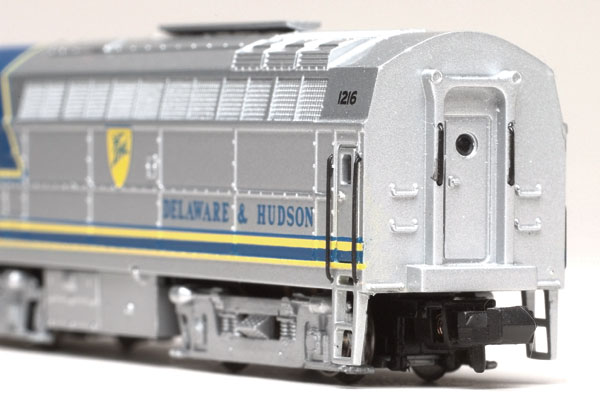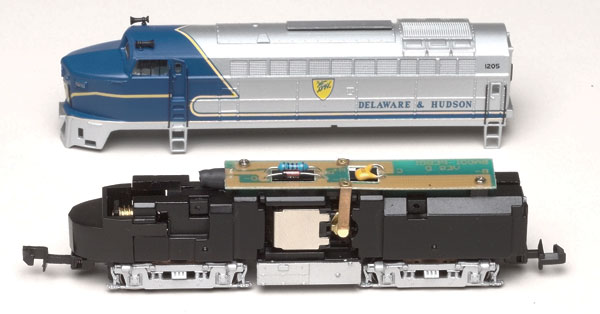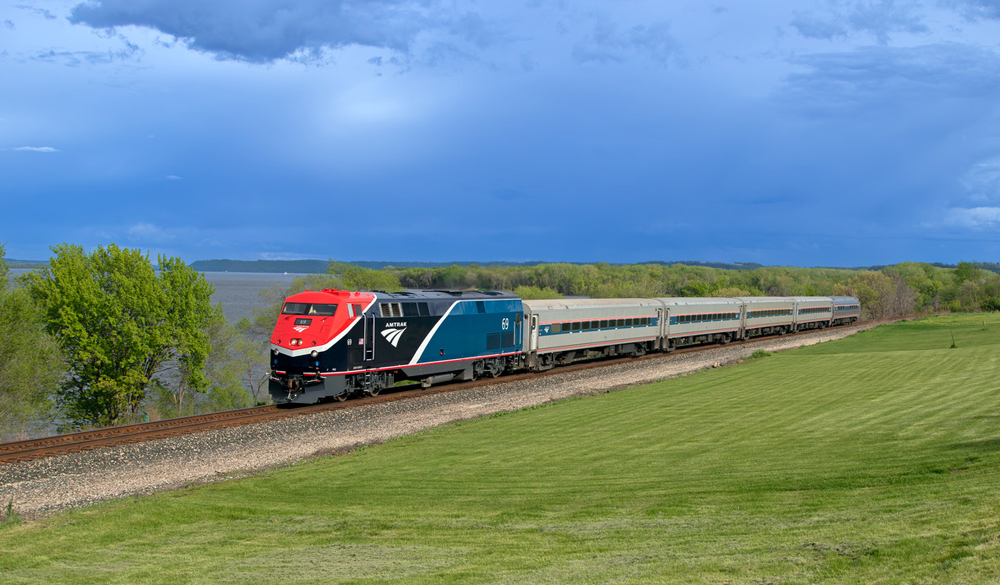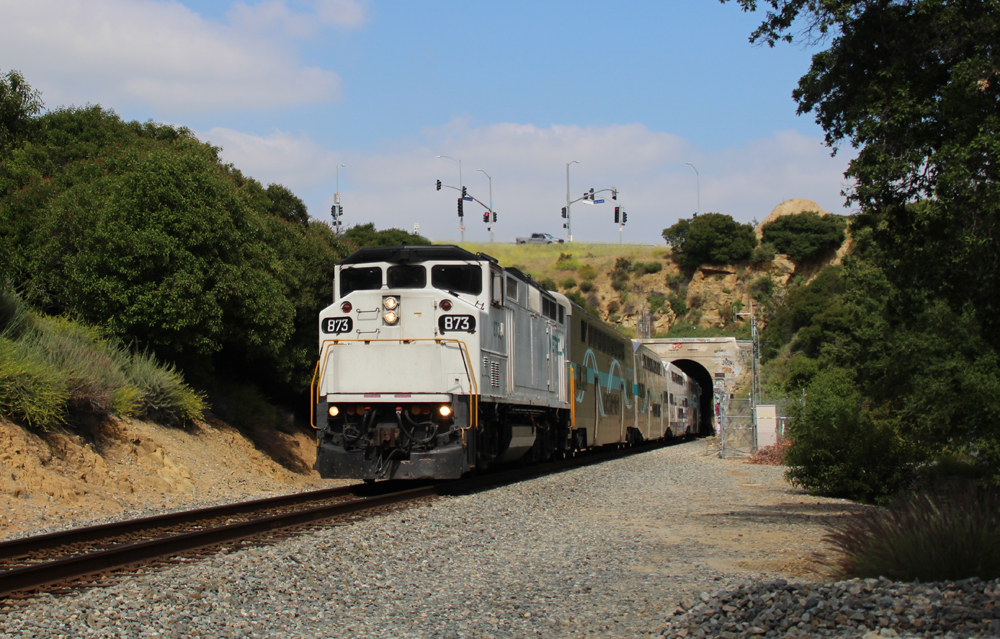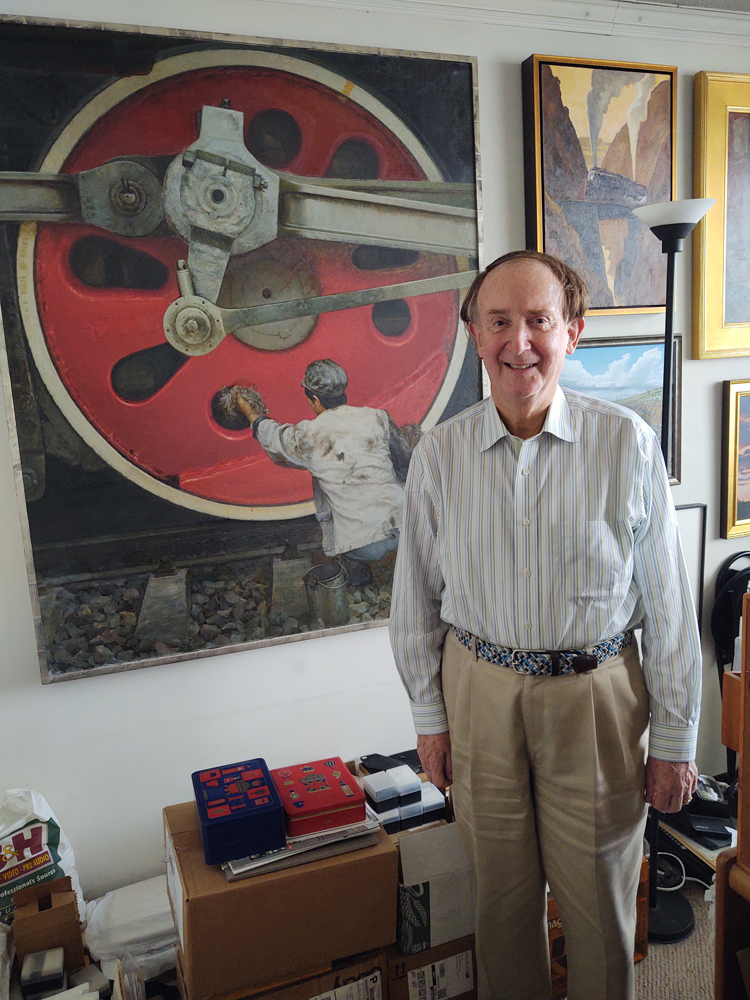The RF-16 was Baldwin Locomotive Works’ final attempt to capture a portion of the road freight locomotive market from Electro-Motive Division and Alco. Built in an almost-identical carbody, the 1,600-hp RF-16 was a debugged version of its predecessor, the 1,500-hp DR-4-4-15. It soon gained a reputation for being a reliable and rugged locomotive.
Baldwin diesels had air-operated throttles that prevented them from operating in multiple with other makes of diesels having electric m.u. controls. This inflexibility contributed to their demise, but also kept matched sets of Baldwins together long after the others were operating in mixed consists.
The sharknose carbody was derived from the Pennsylvania RR’s class T-1 steam locomotives. Besides the angular nose, a wide frame sill below the carbody sides is the primary spotting feature to identify the RF-16.
This all-new model is made in China and is built around a vertically split white metal frame, making it somewhat light for a cab unit compared to the heavier zinc-alloy frames of other N scale locomotives. The five-pole, skew-wound, open-frame motor is isolated from the frame.
Power from the rails is conducted to the frame halves through phosphor- bronze pickups which contact the backs of the blackened metal wheels.
A directional LED headlight circuit board is mounted atop the frame with small screws that make electrical contact with each frame half. Phosphor bronze pickups conduct power from the PC board to the motor brushes.
Turned-brass flywheels smooth out the motion and provide much-needed mass. The drive train is made of acetal plastic and metal parts. Plastic universal couplings transfer motion to brass worms that turn plastic gears in each truck. The wheels meet National Model Railroad Association standards for gauge, flange depth, and tire width.
Converting this locomotive to Digital Command Control is a simple matter of removing the two screws holding the light board in place, replacing the board with a Digitrax DN141E2 decoder, and reinstalling the screws. This is likely the easiest DCC conversion in N scale.
Our samples’ dimensions closely matched drawings published in Model Railroader Cyclopedia: Vol. 2, Diesel Locomotives (Kalmbach). E-R Models has captured the distinctive sharknose lines that helped make the RF-16 a railfan favorite.
The mold work on these RF-16s is excellent with good relief detail on the body, fuel tank, and truck sideframes.
Paint on our samples was evenly applied and opaque. However, the yellow striping and logos were transparent, allowing the D&H blue to show through. The blue on the models also appears to be a couple shades too dark compared to D&H Avon Blue. However, the overall effect is still good.
The model includes truck-mounted Rapido-style couplers, an unwelcome reminder of N scale’s earlier days. E-R Models recommends using a Micro-Trains no. 1134 conversion kit for the A unit front coupler and the no. 1133 conversion kit for the rear coupler and both B unit couplers. The company says it’s considering another style of coupler for future runs.
Despite its light weight, one of our sample A units delivered a drawbar pull of 0.8 ounces, good for about 19 cars on straight, level track. Operation was smooth at all speed ranges, but both samples were a bit noisy at middle and high speeds. This noise level characteristically drops off after the model is run for a while.
Aside from the Rapido-style couplers, this is a fine locomotive that has many of the features N scalers expect today and one-separately applied handrails- that is a nice surprise. At long last, fans of Baldwin locomotives now have one the builder’s more popular locomotives.
Price: $139.95
Manufacturer:
E-R Models
1000 S. Main St.
Newark, NY 14513
www.ermodels.com
Description:
Plastic and metal ready-to-run model
Features:
DCC ready
Directional LED headlight (A units)
Drawbar pull (single unit): 0.8 ounces
Engine weight (single unit): 3 ounces
Minimum radius: 9¾”
Road names:
A-A unit set
Delaware & Hudson
A-B unit sets
(two different numbered sets are offered in each railroad name)
Baldwin demonstrator set
Baltimore & Ohio (late scheme)
Pennsylvania RR (single stripe)
New York Central (cigar band)
Undecorated






